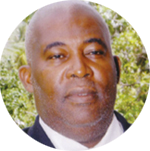
WELCOME students to the Open School for the first term for the academic or school year 2022 to 2023. Because of the inclement weather school was closed and the lesson for Saturday, 15th October, could not be presented. For this , we apologise. Hope the lesson taught today would enlighten you a great deal.
Our lesson today is on “How Children Learn.” A continuation of the second lesson. At the end of the lesson, students will be able to (a) explain, in a simple sentence the cognitive activity (b) Name two principles of l
In the last lesson, we learnt that learning requires that teachers should relate new information to prior knowledge. Also that teachers should use strategies that help learners understand and solve problems in ways that are appropriate for the situation at hand. And thirdly, that teachers should engage learners in self-regulation and being reflective. The self-regulation strategy emphasizes that learners should be aware of their own beliefs and strategies, and to be reflective. Reflection could come by participating in discussions, debates and writing essays.
In today’s lesson, we will learn that teachers and facilitators of learning must aim to help the learner to understand rather than memorize; how teachers and facilitators of learning could help learners to transfer knowledge; and that teachers and facilitators of learning should emphasize and engage learners in practice. I mean a lot of practice!
Learning is better when the material to be taught is organized around general principles and explanations, rather than when it is based on the memorization of isolated facts and procedures.
Indeed, memorization has its place in the learning process. Not that I am denouncing it completely!
All teachers and facilitators of learning want their students to understand what they are learning. As a classroom teacher, I always used observation and the questioning technique to determine whether my students were really understanding the lesson. When I noticed that a learner was screening his or her face during the lesson, it gives me the impression that he or she may be having some difficulty in understanding some aspects of the lesson.
But how does a teacher or facilitator of learning teach for understanding? There are several ways in which that could be done. The following are some suggestions:
Ask students to explain phenomenon or a concept in their own words. Let us say that the teacher is teaching a lesson on Weather; The teacher would indicate that there is much more rainfall and wind this year than last year, and that there are more regular and sudden downfall of rain. Indeed, the students would think hard on this idea because they have been experiencing it. A student, thinking hard on the issue, may say, “teacher, I believe it has to do with climate change”. That is, the student is associating the weather pattern with climate change.
Teacher should show students how to provide examples that illustrate how a principle applies or how a law works.
In the last lesson, I showed how the principle or rule of finding perimeter of a rectangle works. Now students or learners could use similar objects in their classroom to illustrate the rule. They may use their desk, a table in the classroom, or the classroom itself, to determine the perimeter of the object.
This action or activity can consolidate learning.
Now learning is a complex cognitive activity. By cognitive I mean an intellectual process involving thinking, reasoning or remembering.
Teachers or facilitators of learning should increase the amount of time spend on learning in the classroom. I am aware that each teacher is guided by an official time table. However, the teacher can find creative ways of enabling students to spend more time on exercises relating to concepts which have been taught.
Teachers should give teachers learning tasks which are consistent with what they already know. Indeed, new knowledge is provided by the teachers when it becomes necessary.
Teachers should not cover too many topics at once. He or she must give students or learners time to understand the new information and to practice the skills.
In language for example, effective reading and writing requires a lot of practice. Students from disadvantage environments who have less opportunity to learn and who miss school because of illness will not be expected to do as well at school compared to students who had more time to practice and acquire information.
Our final principle for today’s lesson, is helping students or learners transfer knowledge.
Learning becomes more meaningful, when lessons are applied to real-life situations. Students often cannot apply what they have learned in Science, for example, to solve real world problems. They learn about the first law of Isaac Newton but fail to see how it applies to real-life situations.
In newton’s first law, an object will not change its course unless a force acts on it. In real life, a bottle standing on a table will not move unless someone pushes it, lifts it off the table, or a strong wind blows it away.
One way of dealing with this principle of learning is to help students or learners to see the transfer implications for the information they have learned. They should apply what they have learned in one subject area to other areas to which the knowledge to another area in which it may be related.
Now two questions for you. (a) What do you understand by learning is a cognitive activity? (b) name two principles of learning from today’s lesson.





